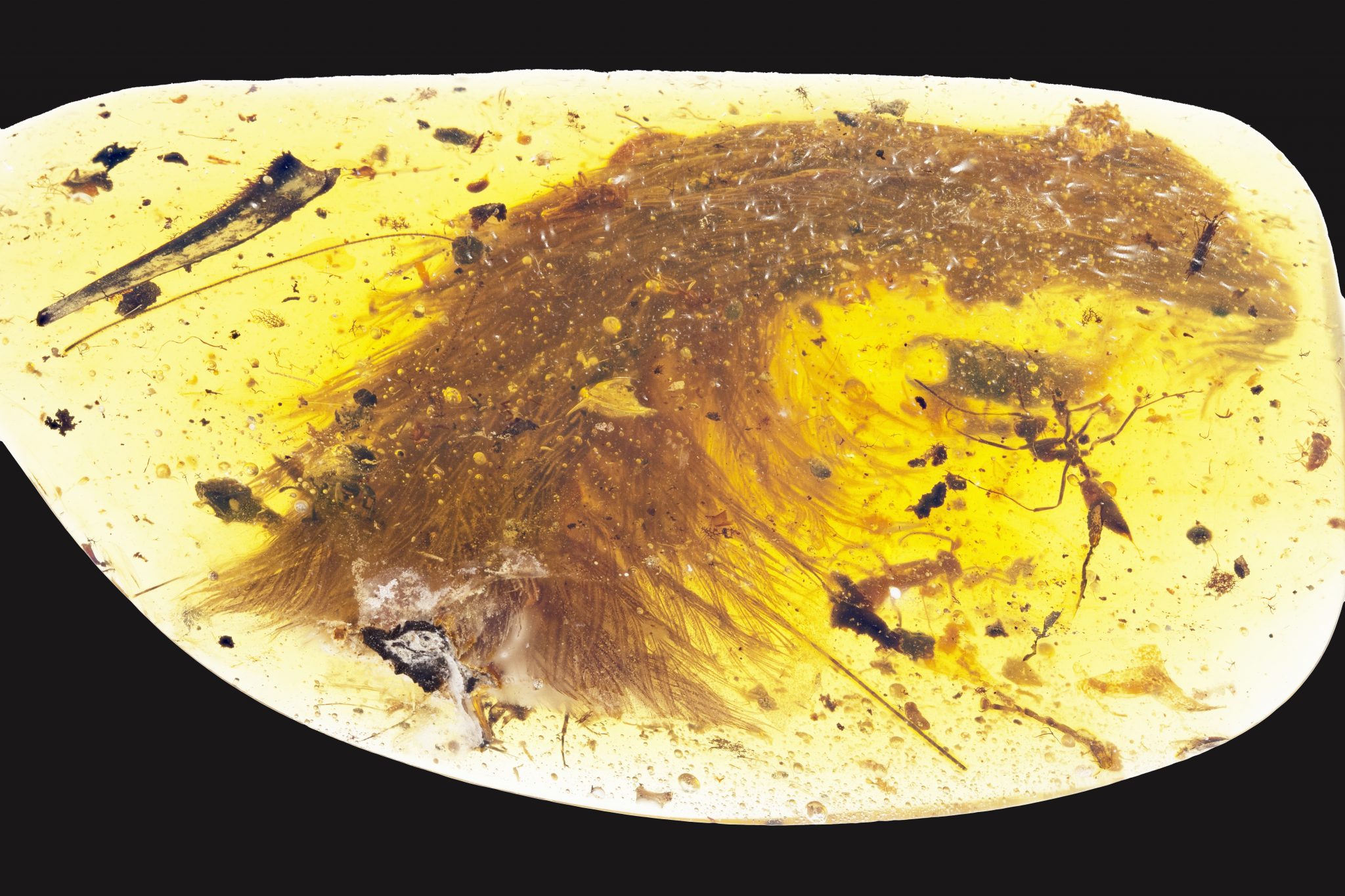The discovery of a 99-million-year-old feathered dinosaur tail conserved in amber in Myanmar shows that Southeast Asia is one of the most interesting palaeontological regions in the world

A report published in Current Biology last Thursday revealed the discovery of a fossilised baby coelurosaur tail in Myanmar last year.
Lida Xing, a palaeontologist at the China University of Geosciences in Beijing, first happened upon the fossil when visiting a market in Myitkyina, the capital of Kachin State in northern Myanmar. A vendor approached him, trying to sell a small piece of amber that was thought to contain plant matter.
Xing saw that the tuft inside the translucent gem was not vegetation, but instead a small, feathered dinosaur tail. Also preserved were bones, soft tissue and a Cretaceous-era ant.
Speaking to NPR, Xing revealed his delight at the discovery.
“I have studied palaeontology for more than ten years and have been interested in dinosaurs for more than 30 years. But I never expected we could find a dinosaur in amber. This may be the coolest find in my life,” he said. “The feathers on the tail are so dense and regular, this is really wonderful.”
The authors of the report have even speculated as to how the young dinosaur, nicknamed Eva, met its demise. They claim that the small creature became stuck in tree resin about 99 million years ago and was unable to make its way out. The DNA of this dinosaur species is similar to that of better-known carnivorous dinosaurs such as the Tyrannosaurus rex and the Velociraptor.
This new study is not the first time that Southeast Asia has brought delight to the palaeontologist community in recent years.
Peter Ng Kee Lin, head of the National University of Singapore’s Lee Kong Chian Natural History Museum, noted that despite funding challenges, palaeontologists have had great success working in the region in recent years.
“The latest find was a few years ago,” he said, “when there were reports that scientists found a Spinosaurus tooth in Peninsular Malaysia; and a decade-plus back, they found some large raptors in northern Thailand.”
He added that, for many palaeontologists, finds such as Eva make the job worthwhile.
“You will neither get rich nor famous doing this arm of science. I have good friends who state this is a mad pursuit – what for, if there is neither wealth nor glory? They are right, of course. But what a splendid madness to be consumed by,” he said
Palaeontological research is a relatively recent phenomenon in Southeast Asia, according to Mike Benton, a palaeontologist at the University of Bristol who was involved in the analysis of the specimen. He added that the region currently has much to offer.
“There’s a kind of catch-up in 20 years for what has been under study for 200 years in Europe,” he said.
Speaking to Southeast Asia Globe, Xing confirmed that the region has “huge potential” for more dinosaur discoveries and that Myanmar in particular “will bring us very vivid dinosaur fauna”.
However, he cited “armed conflicts” between the local and government forces in Kachin as a potential limitation for future researchers.
Sensational dinosaur discovery spurs search for more in Southeast Asia
The discovery of a 99-million-year-old feathered dinosaur tail conserved in amber in Myanmar shows that Southeast Asia is one of the most interesting palaeontological regions in the world

